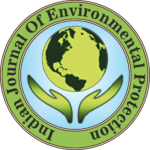IJEP 41(8): 865-875 : Vol. 41 Issue. 8 (August 2021)
Satabdi Chatterjee1*, Indranil Mukherjee2, Barun Mandal3 and Provas Kumar Roy3
1. Techno India College of Technology, Department of Electrical Engineering, Kolkata, West Bengal, India
2. Aliah University Newtown, Department of Civil Engineering, Rajarhat, India
3. Kalyani Government Engineering College, Department of Electrical Engineering, Kalyani, West Bengal, India
Abstract
The constant rise in energy demand due to continuous population rise and industrial growth is putting extreme pressure on conventional energy sources. To meet the demand there is no other option but to fall on renewable energy sources. In this context with the Indian Government promoting lots of schemes for encouragement of green power generation, the use of hybrid energy for micro-grids is also a highly viable and potent solution. The present paper reports on the designing of economic, optimal hybrid micro-grid standalone energy system models including PV and biodiesel generators. The optimization technique employed is based on the technical and economic analysis of renewable hybrid systems in IHOGA (2.4 EDU) software. The paper has also tried to present a comparative study based on the per-unit cost of electrical energy production, operating cost of conventional fossil fuel-based energy sources and a corresponding reduction in greenhouse gases.
Keywords
Biogas, IHOGA (2.4 EDU), Renewable energy source, Standalone hybrid system, Greenhouse gas
References
- Husein, M. and I. Y. Chung. 2018. Optimal design and financial feasibility of a university campus microgrid considering renewable energy incentives. Appl. Energy.225: 273-289.
- Husein, M., et al. 2017. Design and dynamic performance analysis of a stand-alone microgrid: A case study of Gasa Island, South Korea. J. Electrical Eng. Tech., 12(5): 1777-1788.
- Fulzele, J. B. and M. B. Daigavane. 2018. Design and optimization of hybrid PV-wind renewable energy system. Mater. Today. 5(1): 810-818.
- Ganguly, P., A. Kalam and A. Zayegh. 2017. Design an optimum standalone hybrid renewable energy system for a small town at Portland, Victoria using iHOGA. InAustralasian Universities Power Engineering Conference (AUPEC). IEEE Proceedings, pp 1-6.
- Amirkhalili, S. A. and A. R. Zahedi. 2018. Techno-economic analysis of a standalone hybrid wind/fuel cell microgrid system: A case study in Kouhin region in Qazvin. Fuel Cells.18(4): 551-560.
- Rathish, R. J. and K. Mahadevan. 2018. Multi-objective optimization of stand-alone renewable energy hybrid system. In Intelligent efficient electrical systems. Springer, Singapore. pp 1-13.
- Sharma, H., et al. 2019. Comparison of environmental assessment methodology in hybrid energy system simulation software. Procedia CIRP. 80: 221-227.
- Saiprasad, N., A. Kalam and A. Zayegh. 2018. Comparative study of optimization of HRES using HOMER and iHOGA software. J. Sci. Ind. Res., 77: 677-683.
- AlGarni, H. Z., A. Awasthi and M. A. Ramli. 2018. Optimal design and analysis of grid-connected photovoltaic under different tracking systems using HOMER. Energy Conversion Manage., 155: 42-57.
- Kim, I., J. A. James and J. Crittenden. 2017. The case study of combined cooling heat and power and photovoltaic systems for building customers using HOMER software. Electric Power Sys. Res., 143: 490-502.
- Jayachandran, M., and G. Ravi. 2017. Design and optimization of hybrid micro-grid system. Energy Procedia.117: 95-103.
- Goyal, S., S. Mishra and A. Bhatia. 2018. Optimization of hybrid energy system. International Conference on Intelligent circuits and systems (ICICS). IEEE Proceedings, pp 349-354.
- Watson, D., et al. 2017. Photurgen: The open source software for the analysis and design of hybrid solar wind energy systems in the Caribbean region: A brief introduction to its development policy. Energy Reports. 3: 61-69.
- Tawfik, T., et al. 2018. Optimization and energy management of hybrid standalone energy system: A case study. Renewable Energy Focus.25: 48-56.
- Maouedj, R., et al. 2014. Performance evaluation of hybrid photovoltaic-wind power systems. Energy Procedia. 50: 797-807.
- Khan, D., A. Kumar and S. R. Samadder. 2016. Impact of socio-economic status on municipal solid waste generation rate. Waste Manage., 49: 15-25.
- Ahmedelbdawy, W. M., et al. 2018. An experimental study on landfill technology to produce an alternative source of energy from organic waste. International Conference on Computer, control, electrical and electronics engineering. Proceedings, pp 1-5.
- Hamad, T. A., et al. 2014. Solid waste as renewable source of energy: Current and future possibility in Libya. Ther. Eng., 4: 144-152.
- Maisiri, W., et al. 2015. Financial analysis of waste to energy grate incineration power plant for a small city. International Conference on Industrial and commercial use of energy. Proceedings, pp 379-387.
- Li, X., et al. 2016. The status of municipal solid waste incineration (MSWI) in China and its clean development. Energy Procedia. 104: 498-503.
- Rojas, I. R. and L. I. Vásquez. 2018. Energy generation from solid waste – A literature review. International Congress of Innovation and trends in engineering (CONIITI). Proceedings, pp 1-4.
- Fan, J., H. Hong and H. Jin. 2018. Biomass and coal co-feed power and SNG polygeneration with chemical looping combustion to reduce carbon footprint for sustainable energy development: Process simulation and thermodynamic assessment. Ren. Energy.125: 260-269.
- Cremiato, R., et al. 2018. Environmental impact of municipal solid waste management using life cycle assessment: The effect of anaerobic digestion, materials recovery and secondary fuels produc-tion. Ren. Energy. 124: 180-188.
- Das, D., et al. 2016. Estimation of land-fill gas generation from municipal solid waste in Indian cities. Energy Procedia. 90: 50-56.
- Vadenbo, C., D. Tonini and T. F. Astrup. 2017. Environmental multi-objective optimization of the use of biomass resources for energy. Env. Sci. Tech., 51(6): 3575-3583.
